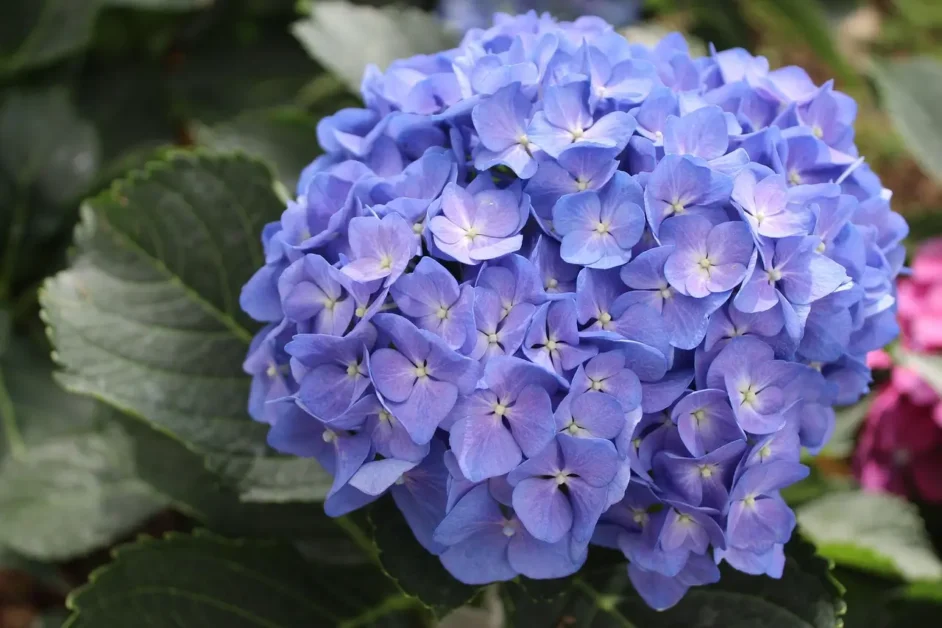When and How Often to Use Hydrangea Fertilizer for Best Results
Hydrangeas are beloved for their show-stopping blooms, but even the healthiest plants need the right support to reach their full potential. Using hydrangea fertilizer at the proper time and frequency is essential for vibrant color, robust growth, and long-lasting flowering. In this guide, we’ll explore the best seasonal schedules and dosage insights, while highlighting effective fertilizer formulations like YaraFert’s specialized solutions.
Timing is everything when it comes to hydrangea fertilizer. Feeding at the wrong time can be ineffective or even harmful.
Hydrangeas benefit most from early-season nutrition to support new growth. Here’s a general guideline:
Early Spring (March–April): Apply a balanced fertilizer like Biofast (12-12-12 NPK with humic and fulvic acids) as soon as the soil warms.Mid to Late Spring (May): Use phosphorus-rich fertilizers such as Ugarit 10-65-10 to support bud development.Early Summer (June): Apply potassium-focused solutions like Ugarit K-T-S 25 (36% K2O) to support bloom longevity.Late Summer to Fall (August–September): Avoid high-nitrogen products to prevent soft growth prone to frost.These applications ensure that hydrangeas have the nutrients they need during each phase of their growing cycle.
Frequency of Hydrangea Fertilizer Application by Plant Age How often you apply hydrangea fertilizer depends significantly on the plant’s age and establishment level.
New and mature hydrangeas have different nutritional demands:
First-Year Plants: Apply half-strength fertilizer once every 4–6 weeks using a gentle, organic-based product like Ugarit 10-0-5 + 70% Organic Matter .2–3-Year-Old Plants: Feed every 4 weeks with full-strength applications of balanced formulas (e.g., Ugarit 27-27-27 + TE Established Plants (4+ years): Apply a complete fertilizer once in early spring , followed by light feedings every 6–8 weeks during the growing season.This phased approach supports root development, flower production, and plant stability.
READ MORE: Choosing the Best Fertilizer for Hydrangeas: A Guide to Vibrant Blooms
Over-application of hydrangea fertilizer can cause more harm than good. It’s important to recognize the warning signs.
If your hydrangeas are showing stress, overfeeding may be the culprit. Look for these symptoms:
Leaf tip burn or scorched edgesDark green foliage with no blooms Excessive soft growth that’s vulnerable to pestsWilting despite moist soil White crust on the soil surface (salt buildup)To prevent overfeeding, use slow-release options such as SULFOMIX
Monthly Schedule for Balanced Hydrangea Fertilizer Use Consistency is key when fertilizing hydrangeas. A structured monthly schedule helps maintain healthy, productive plants.
Here’s a general monthly breakdown tailored for most climates:
March: CALCIMAG April: Biofast May: Use Ugarit 10-65-10 Ugarit DKP June: Apply Ugarit K-T-S 70 Super DKP July: Supplement with SULPHOMIN August: Use Ugarit Multi September: Light application of Phosphoric Acid 85% This schedule balances nitrogen, phosphorus, and potassium while providing calcium, sulfur, and trace minerals critical to long-term hydrangea health.
READ MORE: How to Choose the Right Hydrangea Fertilizer Based on Soil Type
Weather plays a major role in determining how often to apply hydrangea fertilizer. Rainfall, temperature, and humidity influence nutrient uptake.
Adjust your fertilization frequency using these climate-based considerations:
Rainy Seasons: Nutrients leach quickly—apply fertilizer more frequently in diluted doses (every 3–4 weeks).Hot, Dry Weather: Hydrangeas slow their metabolism; reduce frequency to avoid stress.Cool, Cloudy Months: Nutrient uptake slows—apply only half strength if needed.Choose formulations designed for seasonal challenges. For instance:
Ugarit Beet Sulforex 60 + Cu Ugarit Cereal Always water thoroughly before and after applying liquid or granular fertilizers to reduce root burn and promote even distribution.
Final Thoughts Fertilizing hydrangeas isn’t about simply feeding the plant—it’s about timing, balance, and consistency. By using the right hydrangea fertilizer at the correct intervals, gardeners can unlock vibrant blooms and lush foliage season after season.
Products like YaraFert’s Biofast , SULFOMIX , Ugarit DKP , and Ugarit 10-65-10 are designed to support each stage of your hydrangea’s growth cycle. Whether you’re adjusting to weather, planting young shrubs, or maintaining established hedges, these targeted formulations make fertilization precise and effective.
Ready to elevate your hydrangea game?
Explore our full line of YaraFert solutions.
Contact our expert team for personalized feeding schedules.
Start a seasonal program today and watch your hydrangeas thrive. Let your garden speak in vibrant hues—powered by smart hydrangea fertilizer use and backed by proven nutrition.
READ MORE: The Complete Guide to Hydrangea Fertilizer for Vibrant Blooms
[{"id":10433,"link":"https:\/\/yarafert.com\/nitrogen-fertilizer-soybeans\/","name":"nitrogen-fertilizer-soybeans","thumbnail":{"url":"https:\/\/i0.wp.com\/yarafert.com\/wp-content\/uploads\/2025\/09\/featured-image-4-1.webp?fit=1200%2C628&ssl=1","alt":""},"title":"Nitrogen Management for Soybeans: Efficient Fertilization Tips","author":{"name":"yarafert","link":"https:\/\/yarafert.com\/author\/yarafert\/"},"date":"Sep 29, 2025","dateGMT":"2025-09-29 08:50:48","modifiedDate":"2025-09-29 11:50:50","modifiedDateGMT":"2025-09-29 08:50:50","commentCount":"0","commentStatus":"open","categories":{"coma":"<a href=\"https:\/\/yarafert.com\/category\/nitrogen-fertilizer\/\" rel=\"category tag\">Nitrogen fertilizer<\/a>","space":"<a href=\"https:\/\/yarafert.com\/category\/nitrogen-fertilizer\/\" rel=\"category tag\">Nitrogen fertilizer<\/a>"},"taxonomies":{"post_tag":"<a href='https:\/\/yarafert.com\/tag\/nitrogen-fertilizer-soybeans\/' rel='post_tag'>Nitrogen fertilizer soybeans<\/a>"},"readTime":{"min":3,"sec":53},"status":"publish","excerpt":""},{"id":10428,"link":"https:\/\/yarafert.com\/14-14-14-fertilizer-usage\/","name":"14-14-14-fertilizer-usage","thumbnail":{"url":"https:\/\/i0.wp.com\/yarafert.com\/wp-content\/uploads\/2025\/09\/featured-image-2.webp?fit=1200%2C628&ssl=1","alt":""},"title":"How to Use 14-14-14 Fertilizer for Optimal Plant Growth","author":{"name":"yarafert","link":"https:\/\/yarafert.com\/author\/yarafert\/"},"date":"Sep 29, 2025","dateGMT":"2025-09-29 08:31:08","modifiedDate":"2025-09-29 11:31:10","modifiedDateGMT":"2025-09-29 08:31:10","commentCount":"0","commentStatus":"open","categories":{"coma":"<a href=\"https:\/\/yarafert.com\/category\/types-of-fertilizers\/\" rel=\"category tag\">Types Of Fertilizers<\/a>","space":"<a href=\"https:\/\/yarafert.com\/category\/types-of-fertilizers\/\" rel=\"category tag\">Types Of Fertilizers<\/a>"},"taxonomies":{"post_tag":""},"readTime":{"min":4,"sec":39},"status":"publish","excerpt":""},{"id":10423,"link":"https:\/\/yarafert.com\/10-10-10-fertilizer-science-2\/","name":"10-10-10-fertilizer-science-2","thumbnail":{"url":"https:\/\/i0.wp.com\/yarafert.com\/wp-content\/uploads\/2025\/09\/ChatGPT-Image-Sep-29-2025-08_14_07-AM.webp?fit=942%2C628&ssl=1","alt":""},"title":"The Science Behind 10-10-10 Fertilizer and Plant Nutrition","author":{"name":"yarafert","link":"https:\/\/yarafert.com\/author\/yarafert\/"},"date":"Sep 29, 2025","dateGMT":"2025-09-29 05:28:24","modifiedDate":"2025-09-29 08:28:26","modifiedDateGMT":"2025-09-29 05:28:26","commentCount":"0","commentStatus":"open","categories":{"coma":"<a href=\"https:\/\/yarafert.com\/category\/10-10-10-fertilizer\/\" rel=\"category tag\">10-10-10 Fertilizer<\/a>","space":"<a href=\"https:\/\/yarafert.com\/category\/10-10-10-fertilizer\/\" rel=\"category tag\">10-10-10 Fertilizer<\/a>"},"taxonomies":{"post_tag":"<a href='https:\/\/yarafert.com\/tag\/10-10-10-fertilizer-science-2\/' rel='post_tag'>10 10 10 fertilizer science<\/a>"},"readTime":{"min":4,"sec":8},"status":"publish","excerpt":""},{"id":10416,"link":"https:\/\/yarafert.com\/hydrangea-fertilizer-fall\/","name":"hydrangea-fertilizer-fall","thumbnail":{"url":"https:\/\/i0.wp.com\/yarafert.com\/wp-content\/uploads\/2025\/09\/featured-image-1.webp?fit=1200%2C628&ssl=1","alt":""},"title":"Fall Hydrangea Fertilizer: Prepping Plants for Winter Dormancy","author":{"name":"yarafert","link":"https:\/\/yarafert.com\/author\/yarafert\/"},"date":"Sep 29, 2025","dateGMT":"2025-09-29 04:59:13","modifiedDate":"2025-09-29 08:04:13","modifiedDateGMT":"2025-09-29 05:04:13","commentCount":"0","commentStatus":"open","categories":{"coma":"<a href=\"https:\/\/yarafert.com\/category\/hydrangea-fertilizer\/\" rel=\"category tag\">Hydrangea Fertilizer<\/a>","space":"<a href=\"https:\/\/yarafert.com\/category\/hydrangea-fertilizer\/\" rel=\"category tag\">Hydrangea Fertilizer<\/a>"},"taxonomies":{"post_tag":"<a href='https:\/\/yarafert.com\/tag\/hydrangea-fertilizer-fall\/' rel='post_tag'>Hydrangea Fertilizer Fall<\/a>"},"readTime":{"min":4,"sec":43},"status":"publish","excerpt":""},{"id":10411,"link":"https:\/\/yarafert.com\/citrus-tree-fertilizer-2\/","name":"citrus-tree-fertilizer-2","thumbnail":{"url":"https:\/\/i0.wp.com\/yarafert.com\/wp-content\/uploads\/2025\/09\/ChatGPT-Image-Sep-29-2025-07_29_31-AM.webp?fit=942%2C628&ssl=1","alt":""},"title":"How to Fertilize Citrus Trees for Optimal Fruit Production","author":{"name":"yarafert","link":"https:\/\/yarafert.com\/author\/yarafert\/"},"date":"Sep 29, 2025","dateGMT":"2025-09-29 04:31:08","modifiedDate":"2025-09-29 07:31:10","modifiedDateGMT":"2025-09-29 04:31:10","commentCount":"0","commentStatus":"open","categories":{"coma":"<a href=\"https:\/\/yarafert.com\/category\/types-of-fertilizers\/\" rel=\"category tag\">Types Of Fertilizers<\/a>","space":"<a href=\"https:\/\/yarafert.com\/category\/types-of-fertilizers\/\" rel=\"category tag\">Types Of Fertilizers<\/a>"},"taxonomies":{"post_tag":""},"readTime":{"min":4,"sec":35},"status":"publish","excerpt":""},{"id":10406,"link":"https:\/\/yarafert.com\/slow-release-fertilizer-frequency\/","name":"slow-release-fertilizer-frequency","thumbnail":{"url":"https:\/\/i0.wp.com\/yarafert.com\/wp-content\/uploads\/2025\/09\/featured-image.webp?fit=1200%2C628&ssl=1","alt":""},"title":"How Often Should You Apply Slow Release Fertilizer?","author":{"name":"yarafert","link":"https:\/\/yarafert.com\/author\/yarafert\/"},"date":"Sep 29, 2025","dateGMT":"2025-09-29 03:57:19","modifiedDate":"2025-09-29 06:57:21","modifiedDateGMT":"2025-09-29 03:57:21","commentCount":"0","commentStatus":"open","categories":{"coma":"<a href=\"https:\/\/yarafert.com\/category\/slow-release-fertilizer\/\" rel=\"category tag\">Slow release fertilizer<\/a>","space":"<a href=\"https:\/\/yarafert.com\/category\/slow-release-fertilizer\/\" rel=\"category tag\">Slow release fertilizer<\/a>"},"taxonomies":{"post_tag":"<a href='https:\/\/yarafert.com\/tag\/slow-release-fertilizer-frequency\/' rel='post_tag'>Slow release fertilizer frequency<\/a>"},"readTime":{"min":5,"sec":0},"status":"publish","excerpt":""}]







